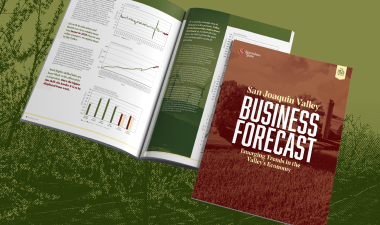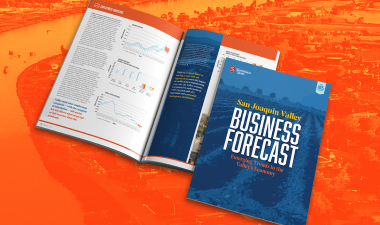Economic recovery is well underway. However, key regional and national indicators — including falling interest rates, easy monetary policy and low tax rates are reversing course and how they impact the San Joaquin Valley will depend on how fast and how high interest rates rise.
That is the economic outlook for the coming year according to the biannual San Joaquin Valley Business Forecast produced by Gökçe Soydemir, the Foster Farms endowed professor of business economics at Stanislaus State.
Here are some of the report’s highlights:
EMPLOYMENT
Every category of employment in the Valley continued to recover with the exception of government employment. Total employment grew in all counties except Kings County in 2021. Retail trade, at an average annual rate of 5.93 percent, was the fastest-growing category of employment in 2021, followed by trade, transportation and utilities employment growing at 5.56 percent.
REAL ESTATE
Home values in the Valley registered a whopping 14.43 percent increase in the second quarter of 2021. Building permits increased at a phenomenal rate of 35.65 percent in 2021. This is similar to the pace observed in 2018 and it reflects the supply side trying to catch up with the excess demand caused by a shortage of inventory. Because of the extension of the Biden administration’s relief package and the Federal Reserve’s continued deployed tools to mitigate the negative effects of the pandemic, there were basically no foreclosures in 2021, comparable to 2020. Freddie Mac 30-year rates continued to fall in the third quarter of 2021, after the Federal Reserve’s signal of no rate hikes through 2022.
PRICES AND INFLATION
As the pandemic recovery intensified, enormous liquidity injections in the economy began to take their toll on the rate of inflation, and these high inflation rates are likely to remain through the first quarter of 2022. In 2021, the average yearly inflation was 3.66 percent, well above the long-term benchmark rate of 2.34 percent. The high price of oil acts as a cost-push factor, driving prices higher. Another cost-push factor is high labor costs, which have begun to increase well in advance of the rate of inflation in the early months of recovery.
BANKING AND CAPITAL MARKETS
Valley bank deposits and net loans and leases increased significantly, but the increase in net loans and leases lagged behind the increase in bank deposits. This discrepancy indicates community banks extended fewer loans in 2021. Valley community bank assets in nonaccrual began to trend more steeply upward in 2021 compared to 2020 and are likely to continue at this pace as tapering resumes and rates rise. Community bank assets in default 30 to 89 days and assets in default 90 plus days displayed a different pattern in 2021 than the pattern displayed by bank assets in non-accrual, but with the ending of mortgage forbearance
programs and similar support, the two series will rise in a pattern similar to banks’ assets in non-accrual.
ABOUT THE REPORT AND THE AUTHOR
Gökçe Soydemir’s biannual Business Forecast provides projections for the Valley's labor market, regional housing conditions, prices and inflation, banks and other depositary institutions and capital markets. Soydemir and his team use a unique forecasting model that produces lower and upper statistical confidence bands, with results that are expected to fall within this range. Soydemir joined Stanislaus State as the Foster Farms endowed professor of business economics in 2011. He brings strong expertise and experience in business analysis and forecasting and has published extensively on applied econometrics, regional economics, financial forecasting, market analysis and international finance.



